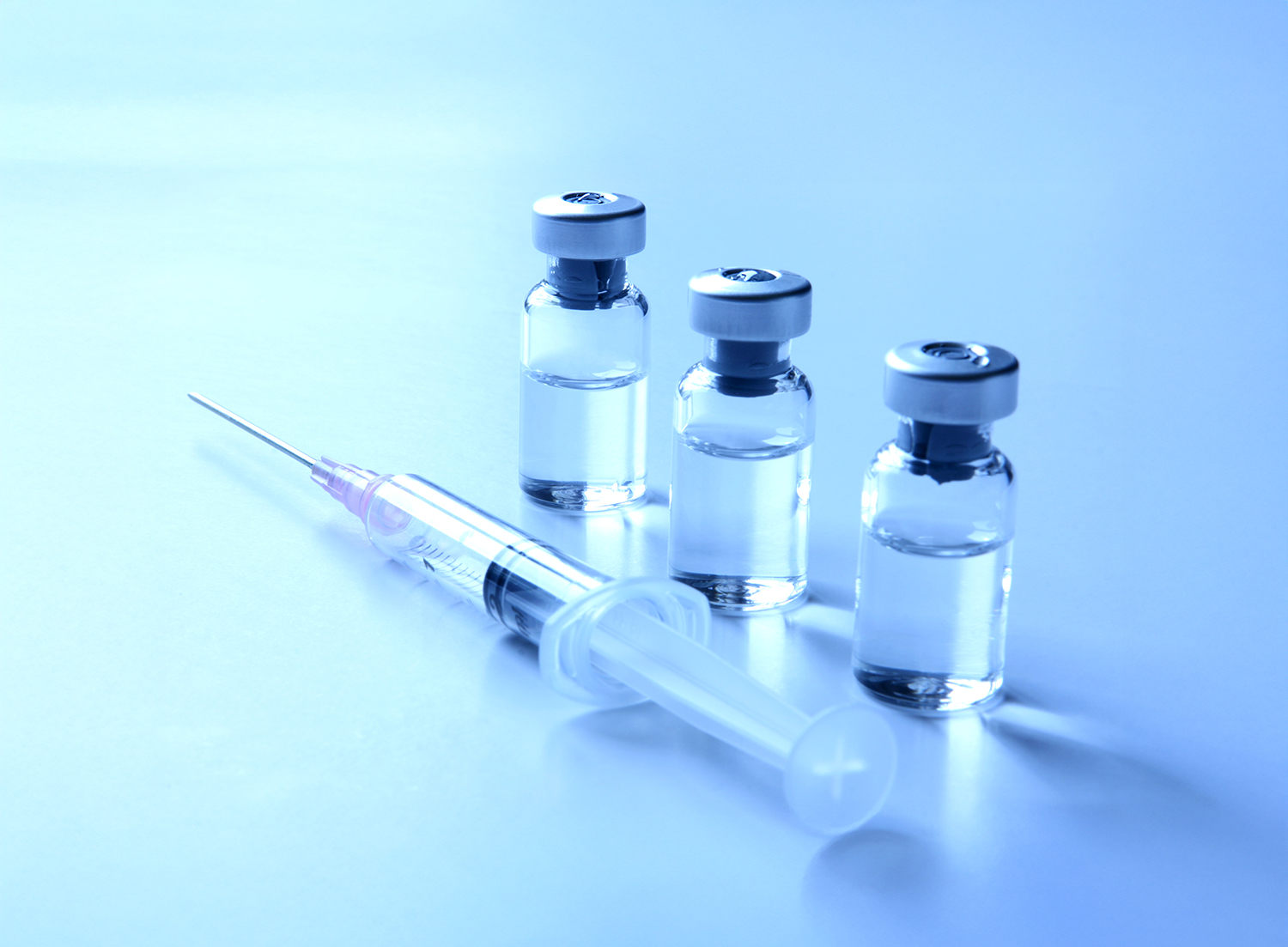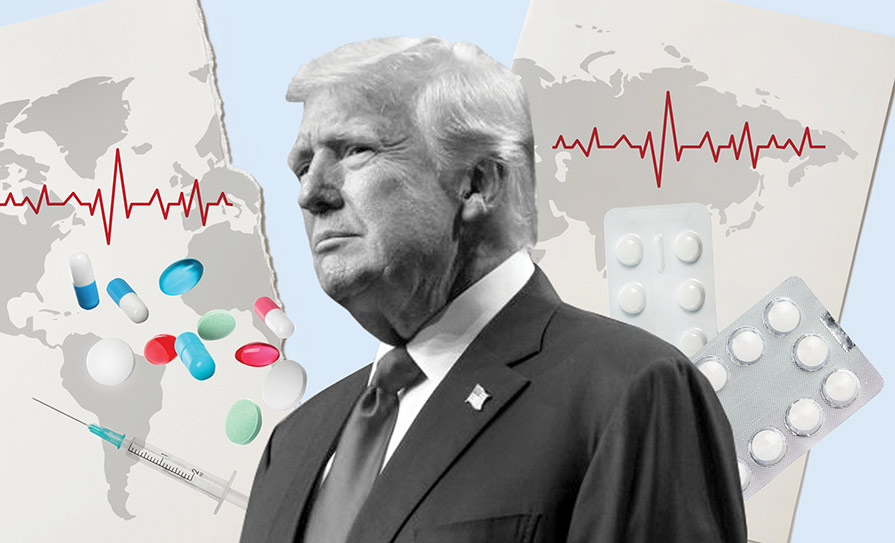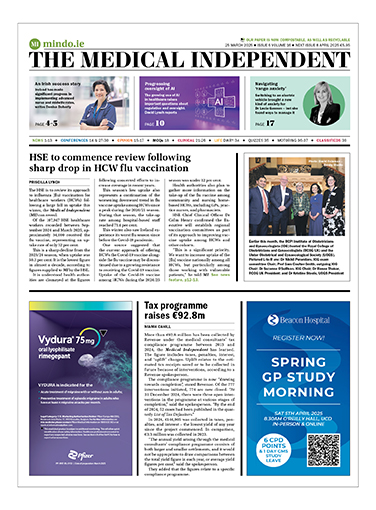Major breakthroughs and ongoing challenges shape the global fight against malaria – so where do we stand now? Priscilla Lynch reports
The global effort to tackle malaria stands at a critical juncture. The advent of the first licensed malaria vaccines heralds a new era for prevention in endemic regions, especially for young children who are the most affected. In recent months, the first deliveries of malaria vaccines for routine use have reached many African countries, accompanied by a scaling-up of supply beyond the robust clinical trials.
However, the World Health Organisation’s (WHO) ambitious eradication targets for 2030 have suffered serious setbacks, with cases rising above pre-pandemic levels.
A deadly disease
Malaria remains one of the world’s deadliest diseases. In 2022, it claimed more than 600,000 lives amid an estimated 249 million cases, the vast majority in Africa.
In May 2015, the WHO Health Assembly adopted the Global Technical Strategy for Malaria 2016-2030. Its ambitious targets included reducing case incidence and mortality rates by at least 90 per cent (compared with 2015 levels), eliminating malaria in at least 35 more endemic countries, and preventing the re-establishment of malaria in all countries that were free of the disease in 2015.
Despite initial achievements, progress has stalled. In May 2021, the Health Assembly adopted an updated version of the strategy that considered the changing malaria landscape, including the plateauing of progress and disruptions caused by the Covid-19 pandemic.
The global incidence of cases and deaths in 2022 represented a notable increase on 2019: 249 million cases were reported in 2022 (vs 233 million) and approximately 608,000 deaths (vs 576,000). If the current trajectory persists, the 2030 target for reducing malaria case incidence and mortality rates will be missed by almost 90 per cent, according to the WHO.
Despite these setbacks, there have also been positive developments in the battle against malaria.
Vaccine breakthroughs
Developing a successful malaria vaccine has been a formidable challenge. Unlike other vaccine-preventable diseases that are caused by viruses or bacteria, malaria is caused by a parasite (Plasmodium) which has a complex biology, life cycle, and genome, and more ways to hide from the immune system. Furthermore, Plasmodium has different developmental stages.
After decades of work, however, there have been major breakthroughs in recent years. In 2021, the WHO recommended the widespread use of the first licensed malaria vaccine, RTS,S/AS01 (Mosquirix, GSK) for prevention of Plasmodium falciparum malaria in children living in regions with moderate-to-high transmission.
RTS,S, developed in Belgium, is expected to significantly reduce malaria incidence and save many lives in endemic regions.
The RTS,S vaccine was administered to more than two million children in Ghana, Kenya, and Malawi in a four-year pilot programme that demonstrated a 13 per cent reduction in all-cause mortality, and a substantial reduction in severe malaria and paediatric hospital admissions for malaria.
There is also now a second approved malaria vaccine, R21, developed by the University of Oxford, UK, and produced by the Serum Institute of India, one of the world’s largest vaccine manufacturers. It works similarly to RTS,S by targeting the sporozoite of the malaria parasite, and was pre-qualified by the WHO in December 2023. In areas where malaria transmission is highly seasonal, the R21 vaccine reduced cases by 75 per cent.
“Having two reliable and effective malaria vaccines enhances our supply security and bolsters our confidence in meeting the needs of countries,” Dr W Scott Gordon (PhD), head of the Malaria Vaccine Programme at Gavi, the Vaccine Alliance, told the Medical Independent (MI).
“The most important aspect is ensuring countries and communities have access to the vaccines. Ultimately, the vaccines will save thousands of lives each year and reduce the toll of malaria on families, communities, and entire health systems.”
Logistical challenges
Implementing vaccination programmes in regions most affected by mosquito-borne diseases can involve significant logistical challenges, however. These areas often have limited healthcare infrastructure, making vaccine distribution and administration difficult. Ensuring adequate cold chain storage, training healthcare workers, and reaching remote populations, are critical components that require significant resources and coordination. The current two approved vaccines also require administration of multiple doses to maximise efficacy.

Dr Katharine Collins (PhD), Programme Officer of Global Health R&D at Open Philanthropy, who co-invented the R21 vaccine during her postgraduate degree in Oxford, told MI it has the potential to avert around 100,000 malaria deaths in children each year when delivered alongside existing malaria control tools. “But only if it is delivered at scale,” she added.
“Concerns about diverting funds from other critical health interventions has meant not all of the global health community are convinced these vaccines should be rapidly deployed,” she said. “This scepticism, along with limited financial support, seems to be slowing the pace at which the vaccines are being distributed to those who need them most.”
Having two reliable and effective malaria vaccines enhances our supply security and bolsters our confidence in meeting the needs of countries
Latest roll-out plans
After a slow start, there is now sufficient vaccine supply to scale up malaria vaccination in Africa. The roll-out of both vaccines is funded by Gavi, the Vaccine Alliance, in partnership with the WHO, UNICEF, and local partners. Modelling has estimated that both vaccines will prevent up to half a million child deaths over 12 years if vaccination is scaled up to all Gavi-eligible countries.
By this summer, around 4.33 million doses of RTS,S had been delivered to eight countries offering the vaccine in their routine child immunisation programmes under national malaria control plans (Benin, Burkina Faso, Cameroon, Ghana, Kenya, Liberia, Malawi, and Sierra Leone).
It is hoped to vaccinate around 6.6 million children in 2024 and 2025 (four doses for each child are needed).
In 2024 alone, 20 countries in Africa planned to introduce the malaria vaccines into their childhood immunisation programmes and as part of their national malaria control strategies, according to Gavi. Annually, at least 40-to-60 million doses of malaria vaccines will be needed by 2026, growing to 80-to-100 million doses each year by 2030. The Serum Institute of India has manufactured 25 million doses of the R21 vaccine and is committed to scaling up to 100 million doses annually – in an agreement to deliver malaria vaccines at scale and low cost.
While malaria vaccines represent an important addition to the fight against the disease, they are a complementary tool to other tried and tested prevention and control measures. These include vector control (insecticide treated bed nets or targeted indoor residual spraying), chemoprevention, diagnosis, and prompt treatments.
For example, a study looking at the effect of pairing the RTS,S vaccine with bed net distribution showed that this combination was 71 per cent effective against clinical malaria in the first 18 months of the study and 65 per cent effective in the second 18 months. Another study found that seasonal malaria chemoprevention used in combination with RTS,S performed significantly better than either intervention alone. The combination, compared with chemoprevention alone, provided an additional 62.8 per cent protection against clinical malaria episodes; 70.5 per cent against hospital admission with severe malaria; and 72.9 per cent against death from malaria.
“The two challenges we face now are finding enough support to roll out these vaccines quickly and at scale whilst still maintaining the use of existing malaria control tools, and developing new, even better malaria control tools that have the potential to drive down malaria burden and transmission and move countries towards elimination,” Dr Collins said.
Second-generation malaria vaccines
Despite the major breakthrough of successful malaria vaccines, there is room for improvement, particularly regarding efficacy, durability, and logistics. Dr Collins said a vaccine that is more protective and long-lasting will likely be required to truly tackle malaria effectively.
The two currently-approved vaccines both target the same pre-erythrocytic antigen. However, to develop a more effective malaria vaccine, many scientists believe that it is necessary to target both the pre-erythrocytic stage and one or both of the other stages. Next-generation malaria vaccines are aiming to provide more durable protection and broader coverage against various malaria strains.
UltiMalVax is a four-year multi-partner collaborative project between academic institutions, small biotech companies with leading technology and GMP manufacturing capacity, and non-profit organisations. The goal is to develop the ultimate vaccine for malaria elimination – a multi-species, multi-stage, and potentially single-dose, vaccine that will target malaria parasites in Africa, Asia, and South America.
This project, which started on 1 May 2023, builds on the recent success of several partners in the R21/Matrix-M programme. It aims to accelerate malaria eradication by developing the first single vaccine to tackle both major malaria parasite species, P falciparum and P vivax, and confer individual and community protection. The project is supported by funding from the European Commission, and the UK and Swiss governments.

Dr Ole F Olesen, Executive Director of the European Vaccine Initiative, the coordinator of UltiMalVax, said that progress has already been made, just one year into its work, in the design of new pre-erythrocytic and transmission blocking vaccine immunogens for both P falciparum and P vivax versions of malaria. “The consortium has made progress towards designing mRNA versions as well as protein-based versions of its vaccine candidates,” he told MI.
The next step will be to test and select the most potent immunogens and then explore novel technology to combine them into a single potent vaccine candidate. The consortium is also going to test new adjuvant components, thermostable mRNA-technology, and novel virus-like-particles design of vaccines for eliciting a stronger immune response, Dr Olesen said.
It is also hoped that its work could aid the development of vaccines for other mosquito-borne and parasitic diseases such as leishmaniasis and helminth diseases.
“Every new vaccine contributes to our collective knowledge about vaccinology and vaccine development,” Dr Olesen said.
Challenges
Effectively preventing malaria in endemic countries will require the coordinated use of a number of tools, providing multiple layers of protection, and addressing the unique needs of different populations at high risk of severe disease, in a consistent manner, the WHO has stated.
The WHO’s latest malaria report highlights that interruptions to this multifaceted approach have stalled progress. These interruptions include the Covid-19 pandemic, conflict and humanitarian crises, resource constraints, and the rise of antimalarial drug and insecticide resistance.
“The changing climate poses a substantial risk to progress against malaria, particularly in vulnerable regions,” said Dr Tedros Adhanom Ghebreyesus, WHO Director-General, launching the World Malaria Report 2023. “Sustainable and resilient malaria responses are needed now more than ever, coupled with urgent actions to slow the pace of global warming and reduce its effects.”
Despite these setbacks, innovation in prevention and treatment continues.
In the vector control space, there are many new products in the research and development pipeline, according to the WHO. Tools under evaluation include new types of insecticide-treated nets, targeted baits that attract mosquitoes, spatial repellents, and genetic engineering of mosquitoes.
Researchers are also prioritising the development of non-artemisinin-based combination therapies (ACT) in the field of antimalarial medicines due to the emergence and spread of partial artemisinin resistance. The development of next-generation medicines, such as ‘triple ACTs’, which use a combination of artemisinin and two partner drugs and novel agents, is also underway to reduce the risk of drug resistance.
In July, GSK plc and Medicines for Malaria Venture (MMV) announced that the first single-dose medicine for the prevention of relapse of P vivax malaria has now been launched in both Thailand and Brazil. Approvals for the drug, tafenoquine, have been granted in the US, Australia, Brazil, Ethiopia, Guyana, Peru, Thailand, Colombia, and the Philippines, and it is undergoing marketing authorisation evaluation in a number of other countries where P vivax is endemic.
And, in a historic move, the Safety of Antimalarials in the First Trimester (SAFIRE) consortium confirmed its plans to undertake the first phase 3 clinical trial assessing the efficacy and safety of antimalarials in women in their first trimester of pregnancy. Despite the significant health risks associated with malaria in pregnancy – such as miscarriage, stillbirth, preterm delivery, low birthweight, severe maternal anaemia, and maternal mortality – women in their first trimester are left with few medicines for treatment (and none for prevention). So this adaptive platform trial hopes to change the status quo.
Increasing African contributions to the malaria fight
The WHO African Region carries a disproportionately high share of the global malaria burden. In 2022, the region was home to 94 per cent of malaria cases (233 million) and 95 per cent (580,000) of malaria deaths. Children under five years accounted for about 80 per cent – half a million – of all malaria deaths in the region annually.

Between 2019 (pre-pandemic) and 2022, the estimated number of cases in the African region increased from 218 million to 233 million.
“Reports of increasing resistance to current frontline treatments means that novel antimalarial agents are urgently required, and it is critical that Africa follows its own drug discovery and development research agenda that addresses its unique context,” Dr John Woodland (PhD), Research Officer at the University of Cape Town’s Holistic Discovery and Development (H3D) Centre, South Africa, told MI.
H3D aims to deliver candidate drugs with the potential for a single-dose cure for malaria. It has a portfolio of programmes spanning early hit validation to late leads funded by the Bill and Melinda Gates Foundation, MMV, and the South African Medicinal Research Council’s Strategic Health Innovation Partnerships. It is also part of the Malaria Drug Accelerator, a consortium of 18 laboratories that have individually developed and maintained many of the platforms that contribute to early-stage antimalarial drug development, including target discovery and validation.
In the last decade, H3D led an international project team in partnership with MMV that discovered the first small-molecule clinical candidate, for any disease, researched on African soil by an African drug discovery centre. The malaria clinical candidate (MMV390048) reached phase 2 human trials in African patients, and in the process advanced basic and clinical science research, Dr Woodland reported.
Furthermore, it is noteworthy that MMV390048 is the first known plasmodium kinase inhibitor to enter the clinic as, traditionally, kinases are favoured targets for cancer therapies, he added.
Conclusion
The development of vaccines for malaria represents a major turning point. However, significant challenges remain in maximising their impact, efficacy, and roll-out.
The road ahead demands robust efforts to overcome logistical hurdles, scale up vaccine deployment, and further innovate in malaria control strategies.
Continued investment in the development of new vaccines and next-generation tools that are highly cost-effective and scalable, coupled with robust public health infrastructure and community engagement, will be key to achieving the WHO 2030 global malaria targets, ultimately saving millions of lives, according to experts working in the field.
References on request
Developing vaccines for mosquito-borne diseases
Mosquito-borne diseases pose a significant threat to global public health, affecting millions of people annually. Developing vaccines for mosquito-borne diseases, however, is inherently challenging due to the biological complexity of these pathogens. Mosquito-borne viruses and parasites often exhibit high genetic variability, making it difficult to create vaccines that offer broad and long-lasting protection.
Despite these challenges, the last decade has seen much needed progress in this area. As well as the major breakthrough in the creation of the first generation of malaria vaccines, there has also been welcome vaccine breakthroughs for other mosquito-borne diseases, offering new hope for controlling diseases such as dengue, Zika, and chikungunya.
Dengue
There is a growing public health need for effective preventive interventions against dengue, a disease caused by four viruses, termed serotypes 1-4.
Two dengue vaccines have been licensed: Dengvaxia (CYD-TDV), developed by Sanofi Pasteur and Qdenga (TAK-003), developed by Takeda.
Another dengue vaccine, developed at the Laboratory of Infectious Diseases at the National Institutes of Allergy and Infectious Diseases in the US, is in the late stages of clinical development.
Zika
The Zika outbreak in 2015-2016 spurred urgent research into vaccine development for this mosquito-borne disease, which is particularly dangerous for pregnant women and their unborn children.
While no Zika vaccine has yet been approved, several candidates, including DNA-based vaccines and inactivated virus vaccines, are currently in various stages of clinical trials (including phase 1 human trials).
Chikungunya
The world’s first approved chikungunya vaccine, a live attenuated vaccine (manufactured by Valneva as IXCHIQ), was approved by the US Food and Drug Administration in November 2023. It was also recommended for marketing authorisation by the European Medicines Agency (EMA) in May this year. Considering the significant global public health implications of this vaccine, IXCHIQ was assessed under EMA’s OPEN initiative that fosters international collaboration and sharing of scientific expertise to promote global public health. This single-dose vaccine could play a crucial role in controlling outbreaks in affected regions.

This project was funded by the International Center for Journalists through the Health Innovation call.













Leave a Reply
You must be logged in to post a comment.